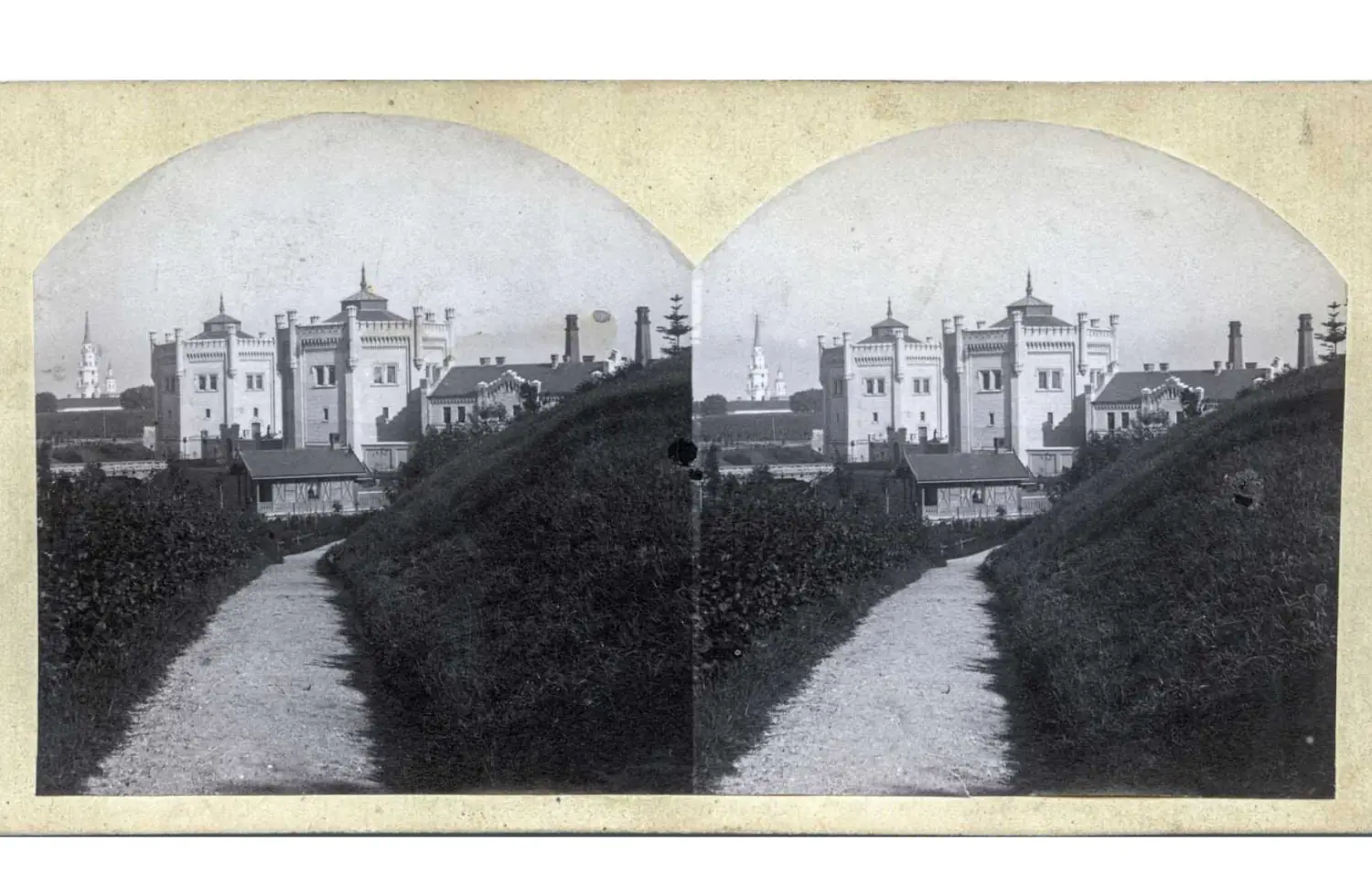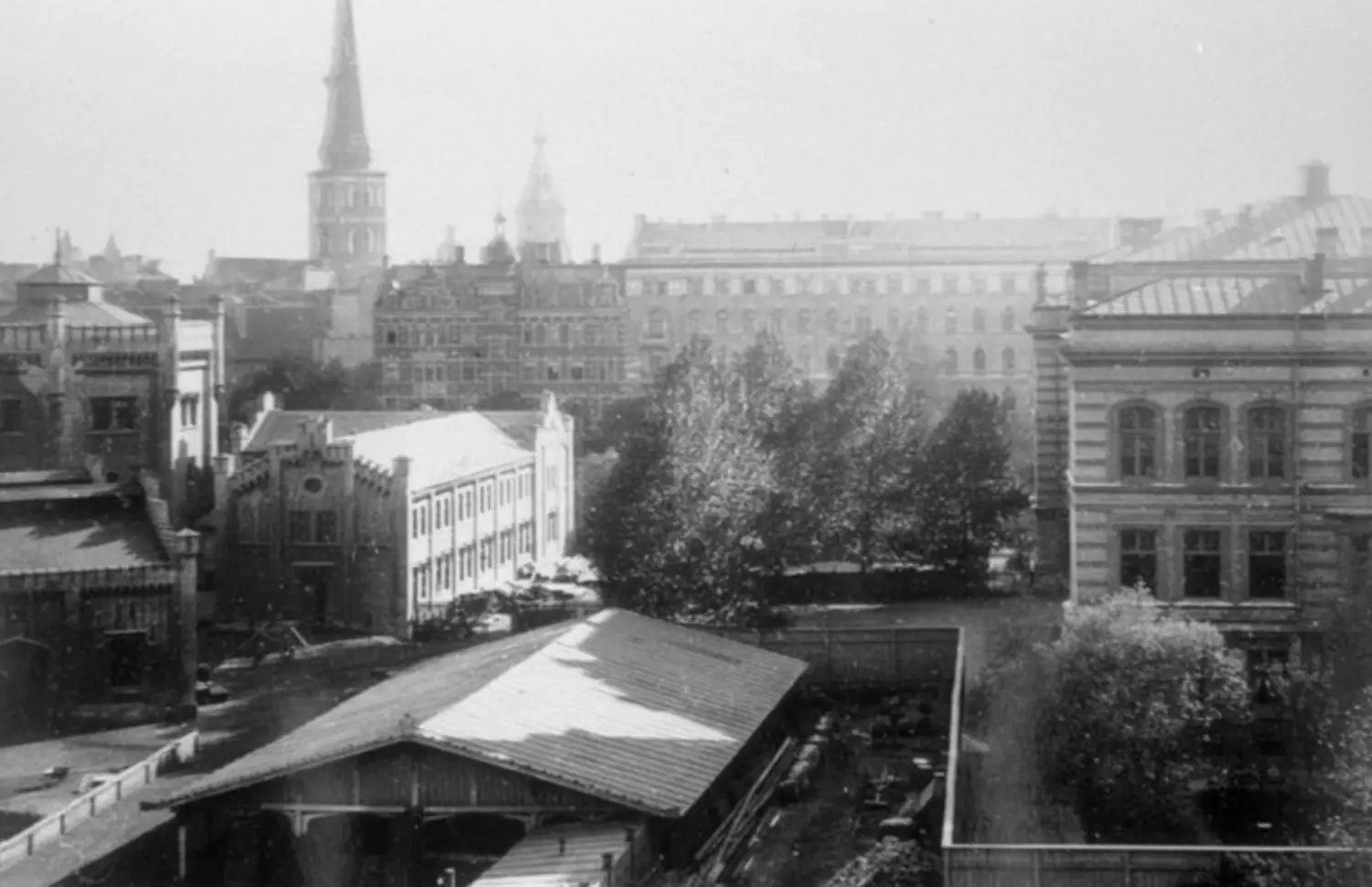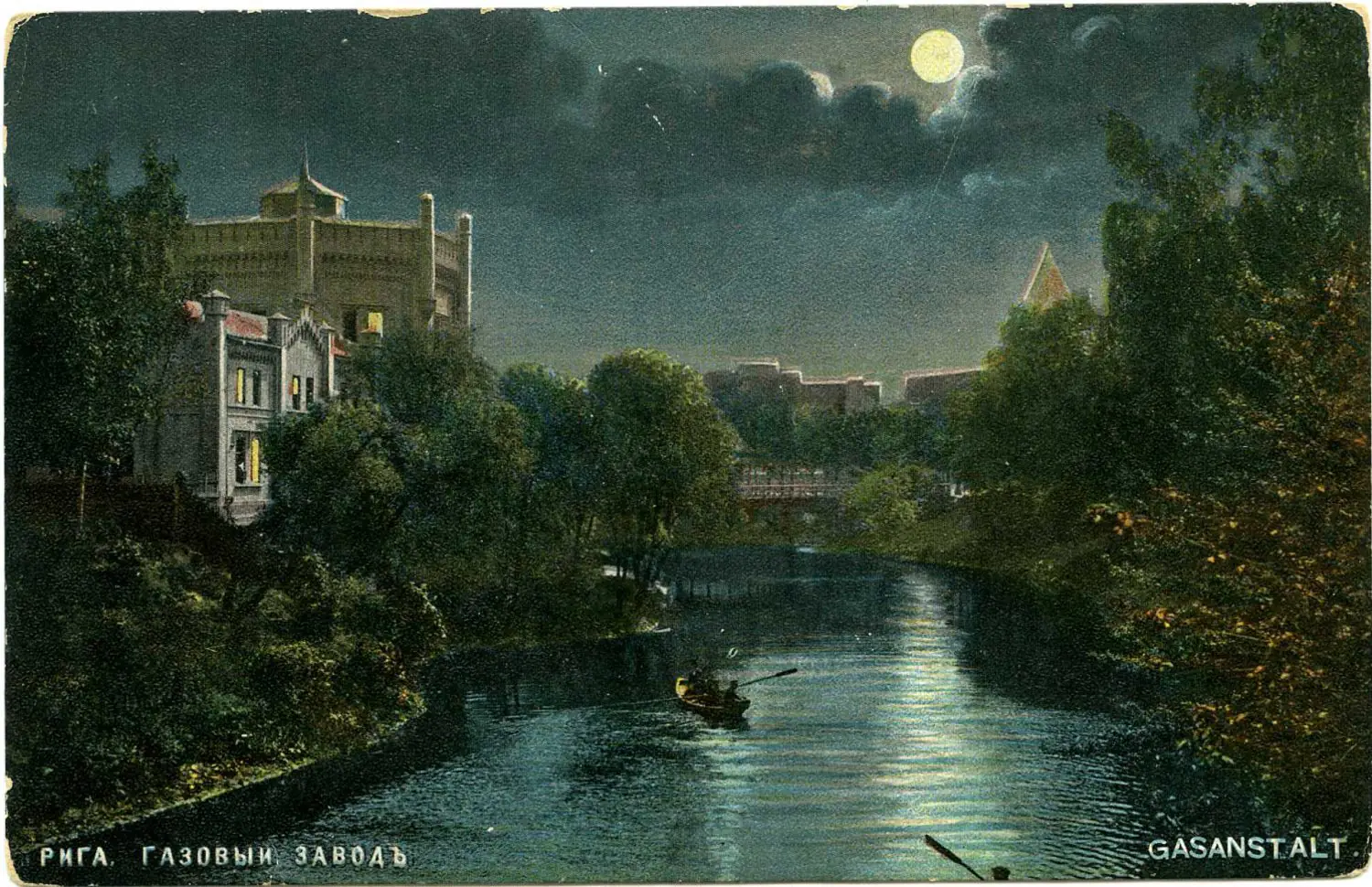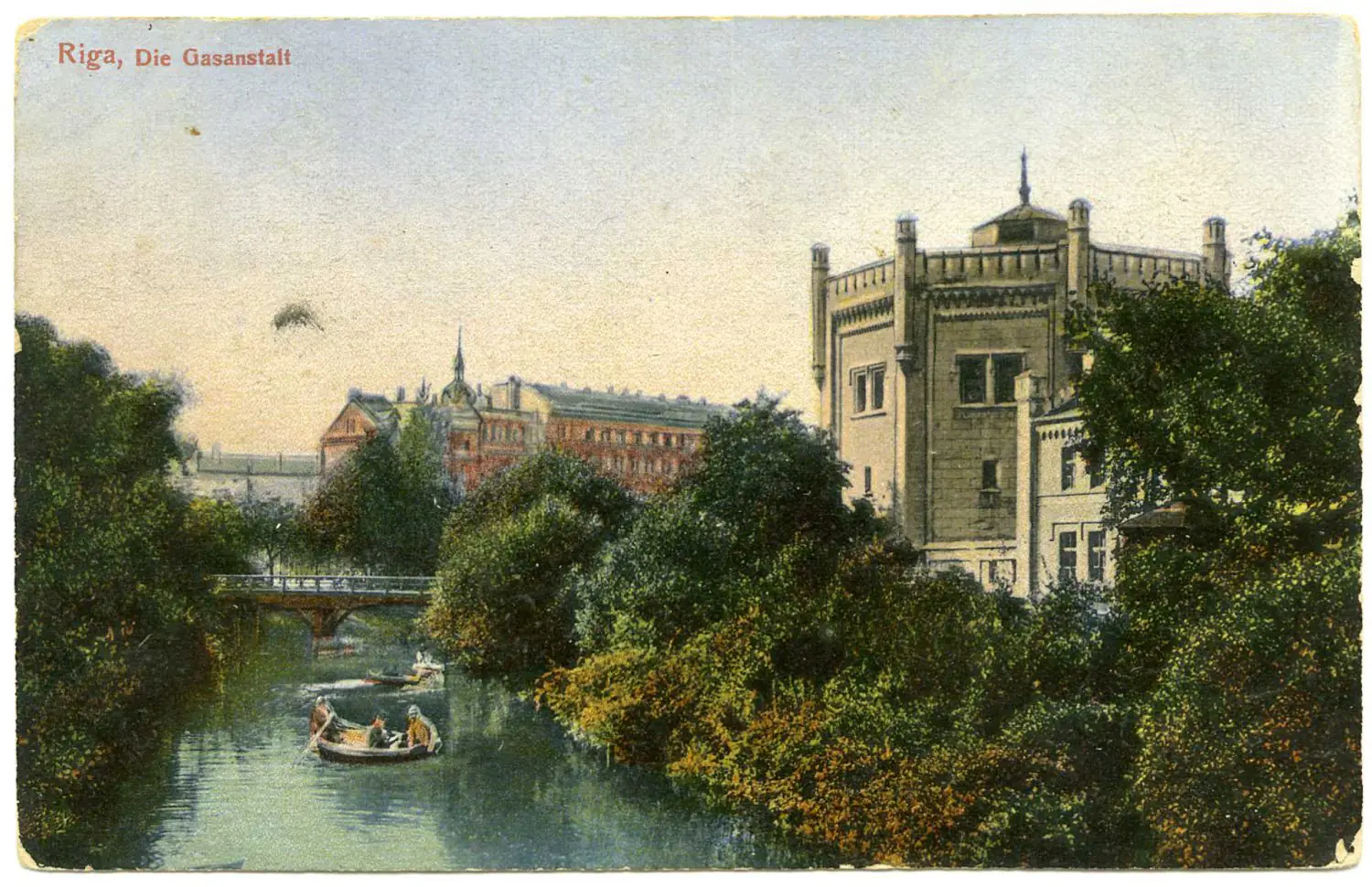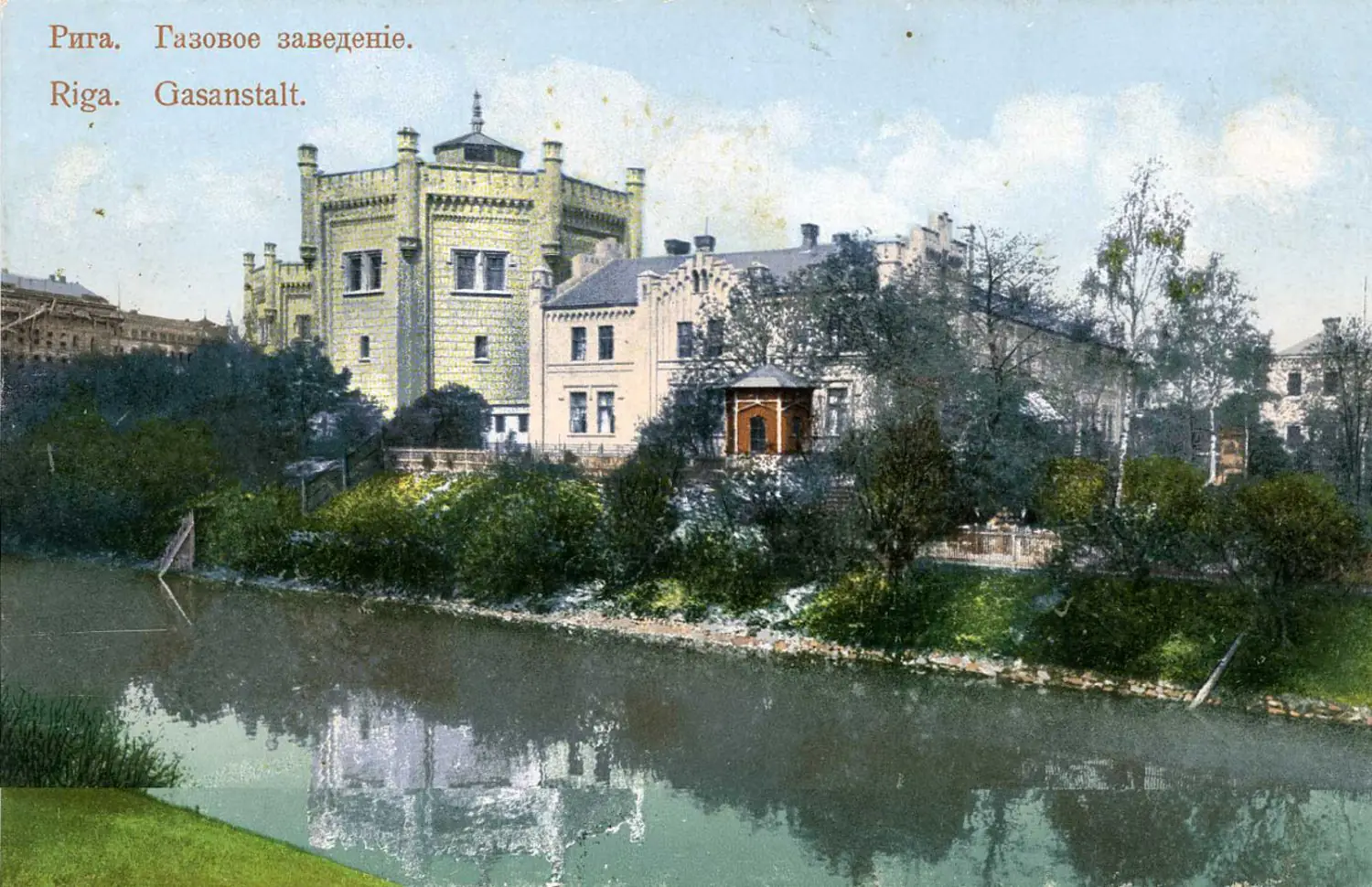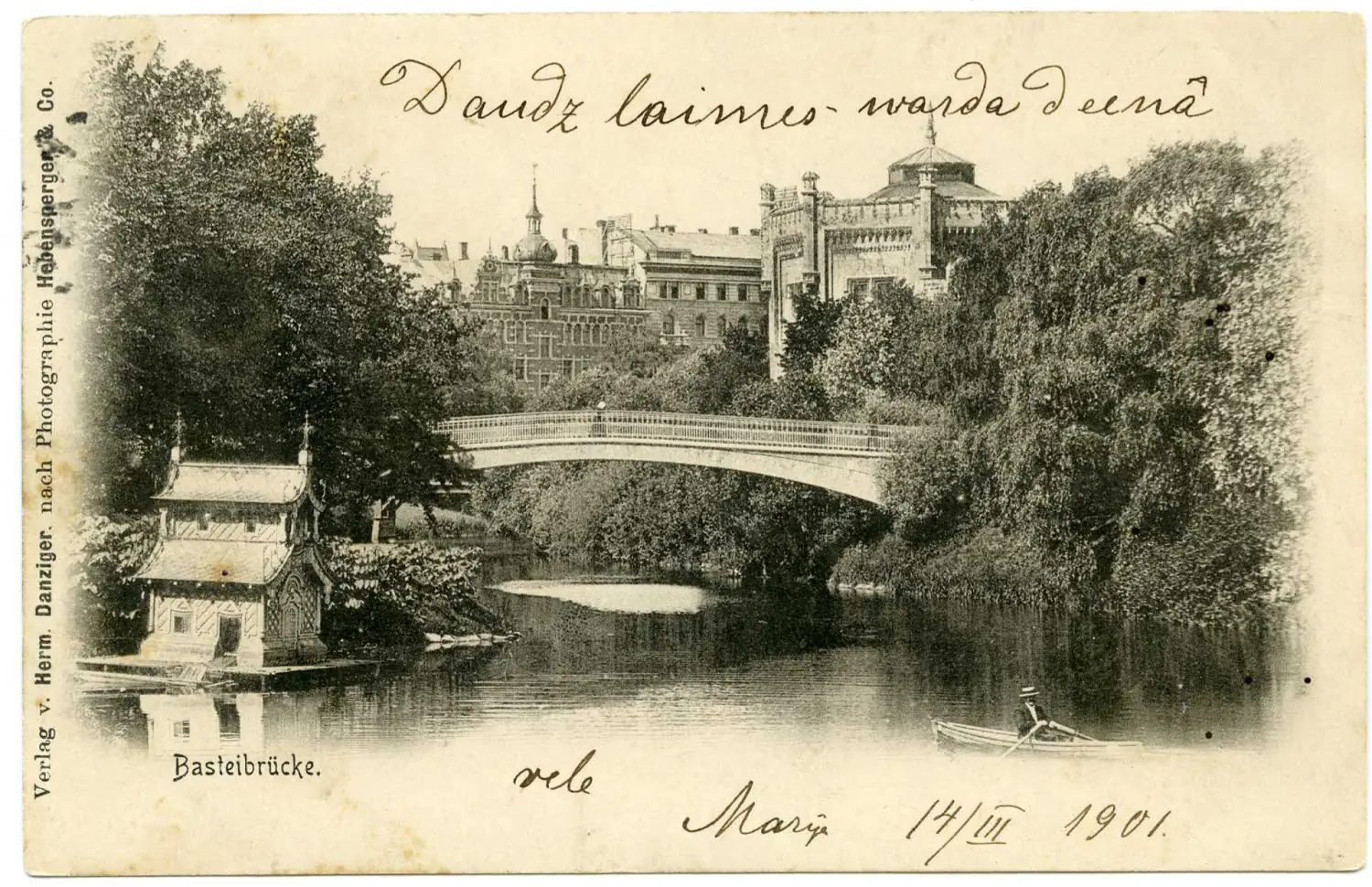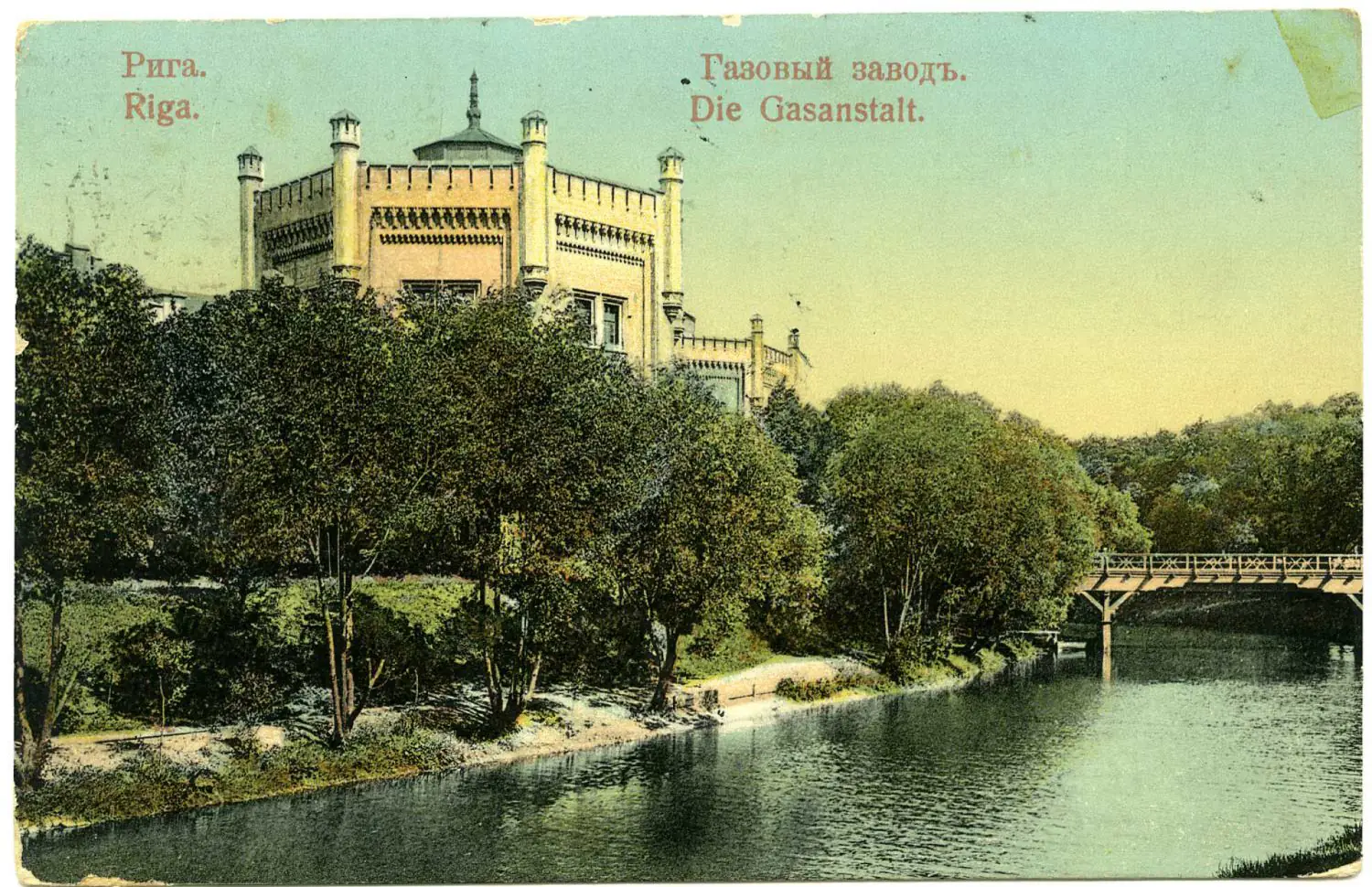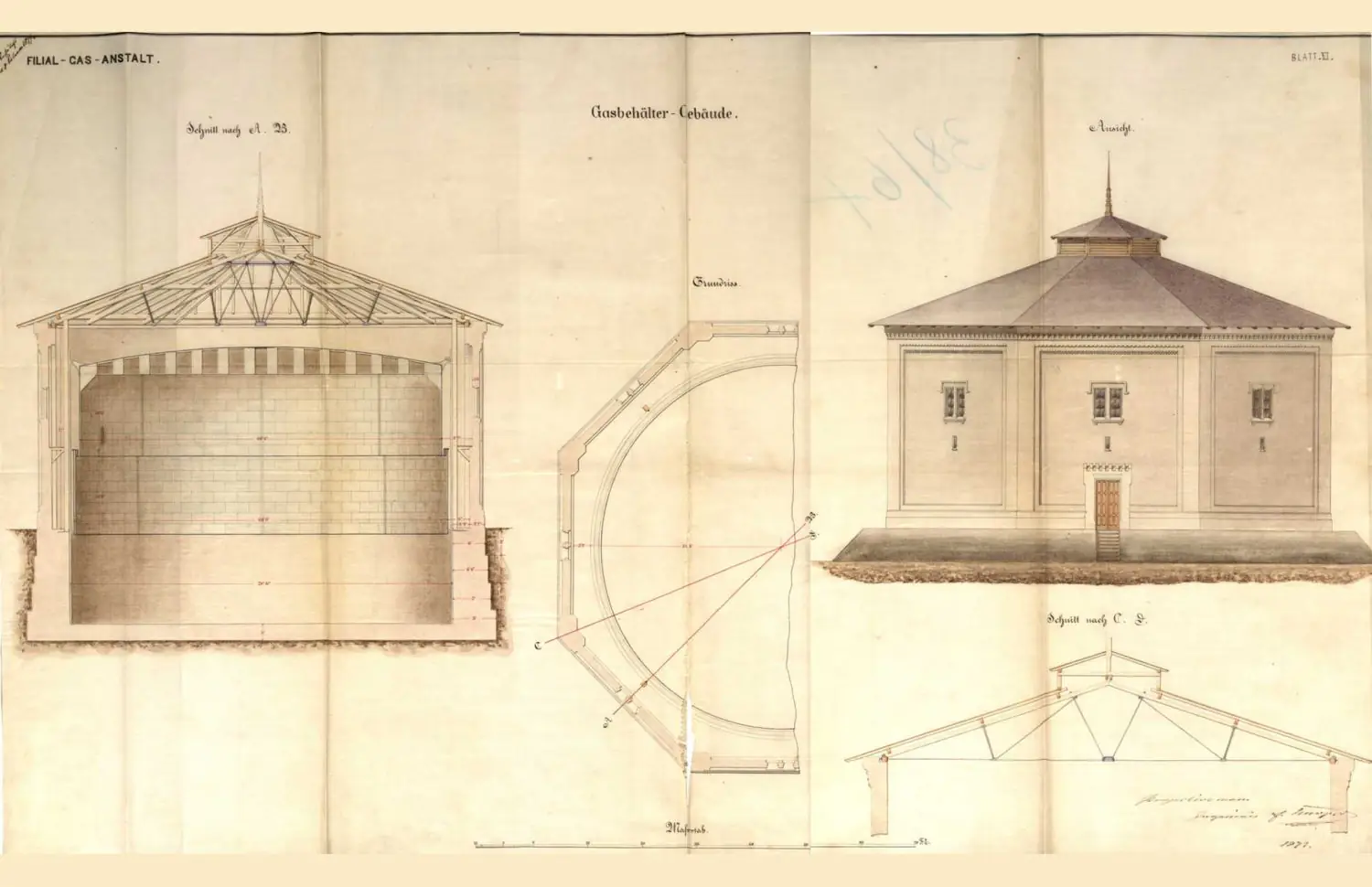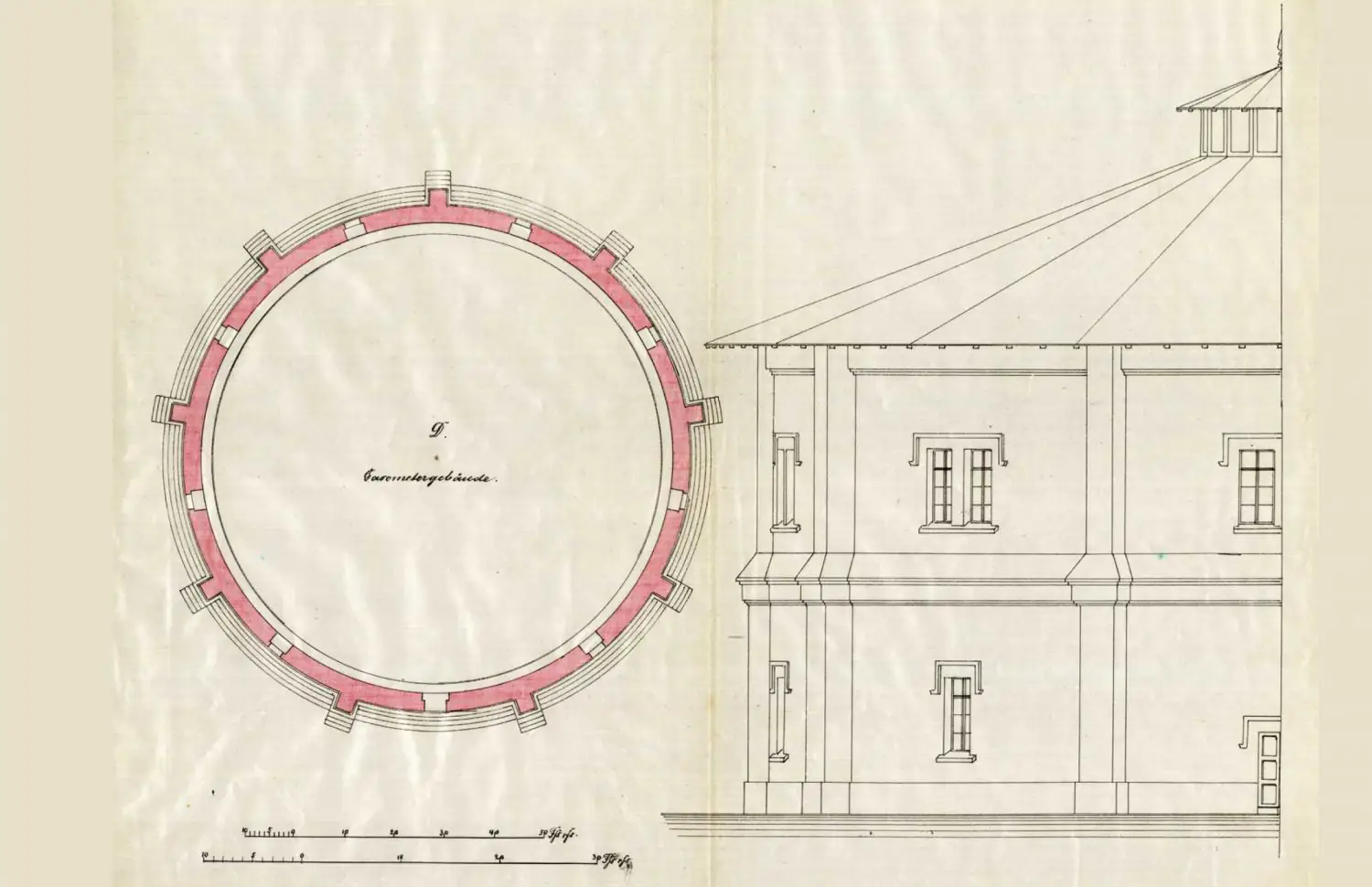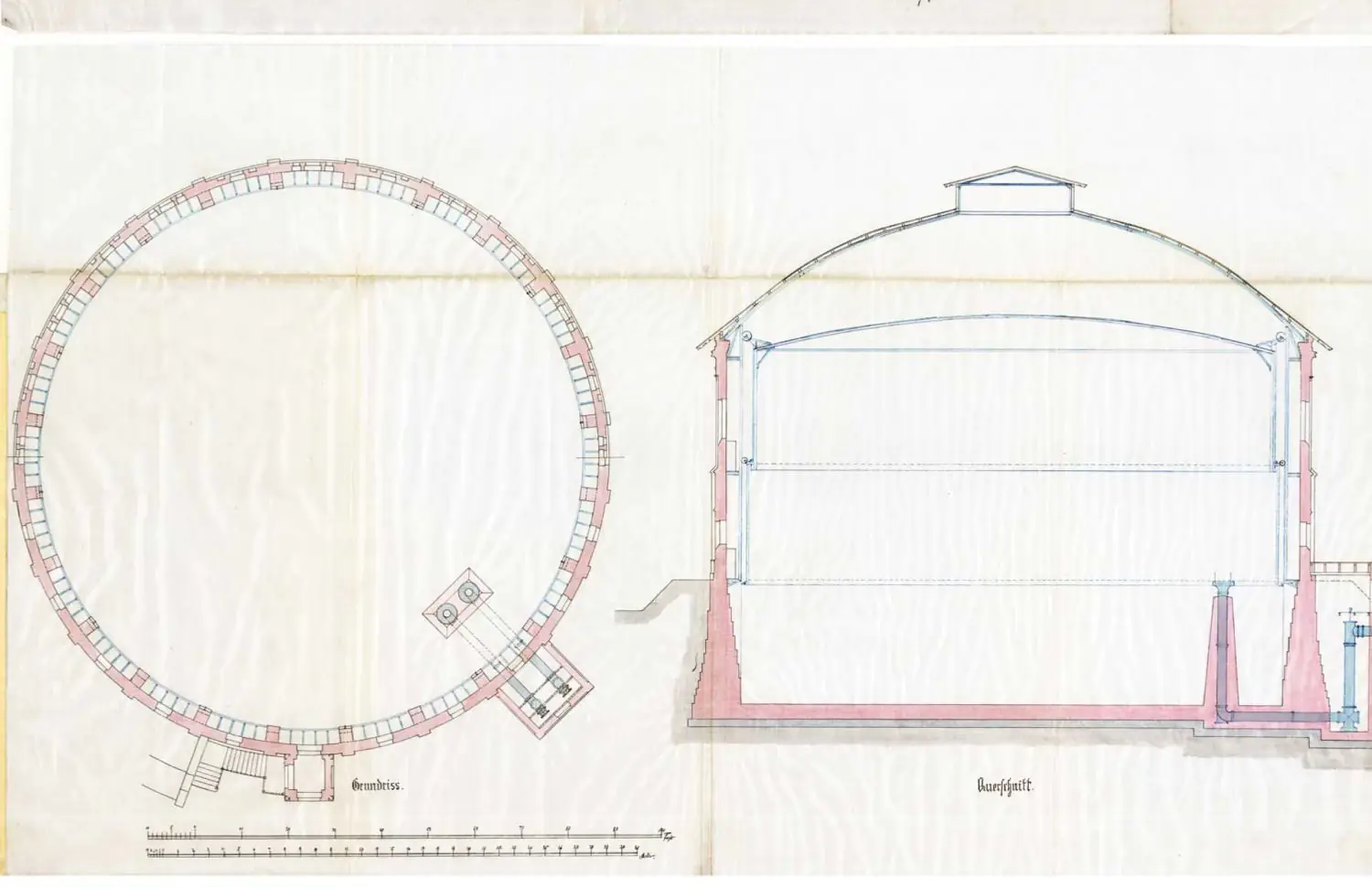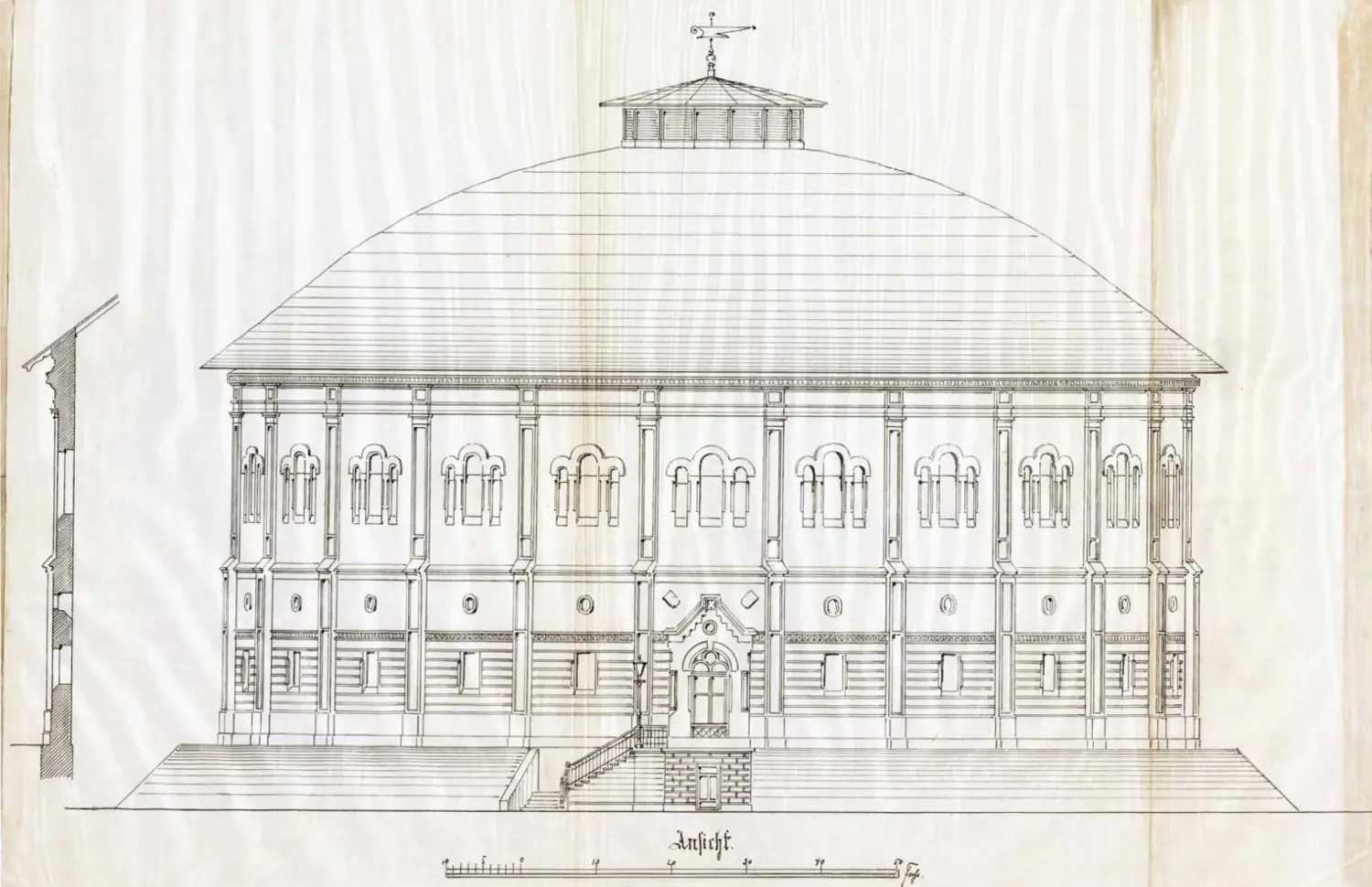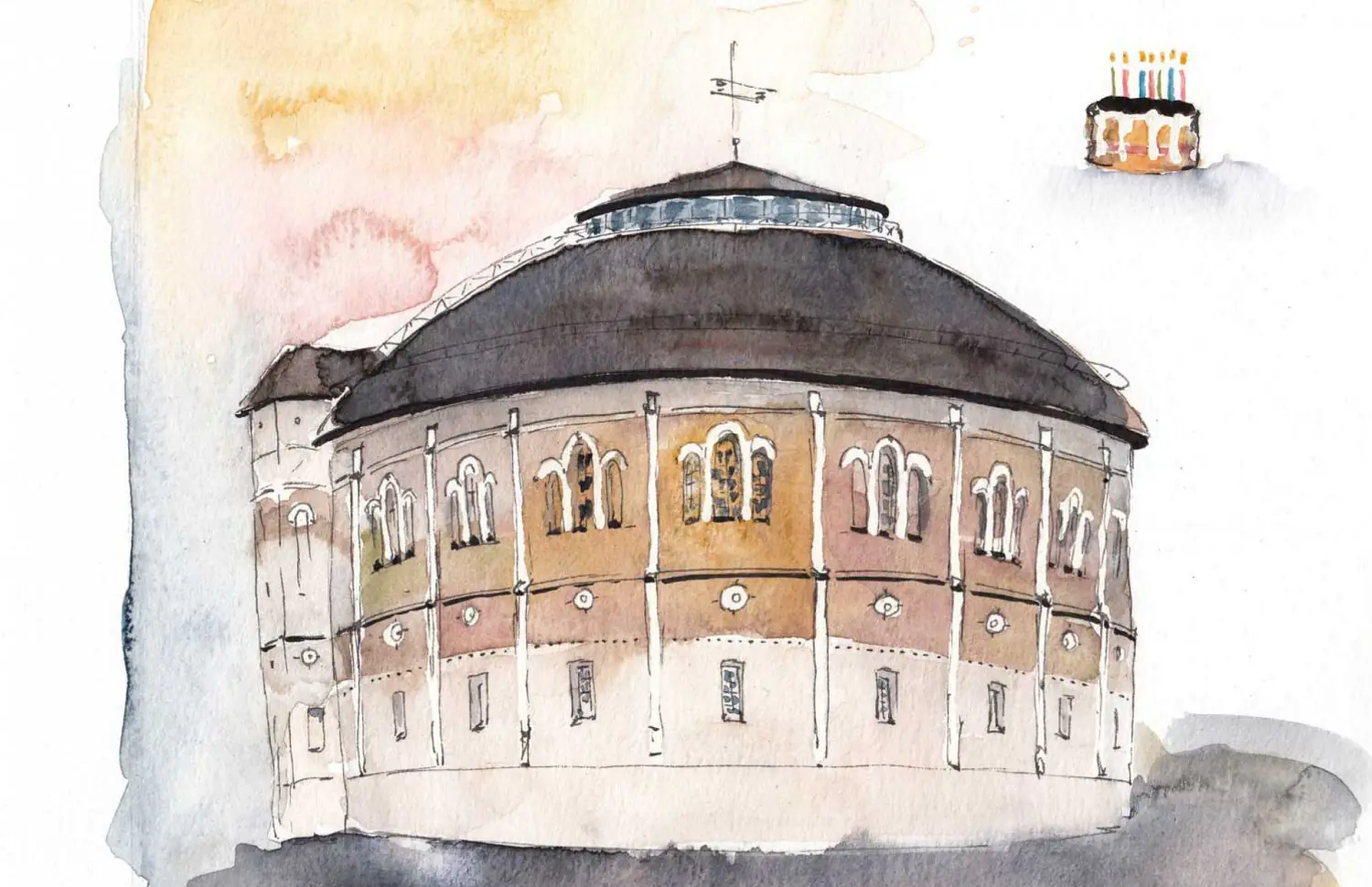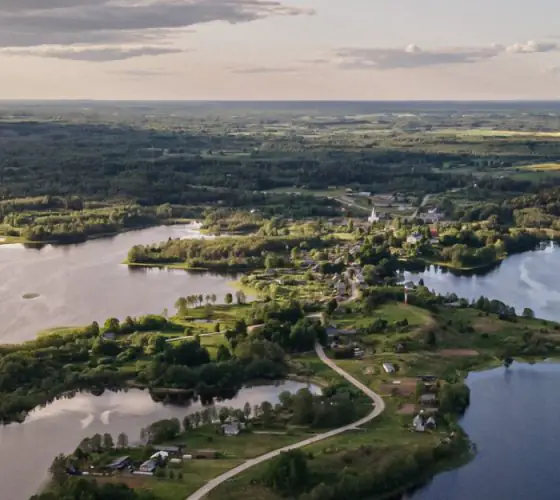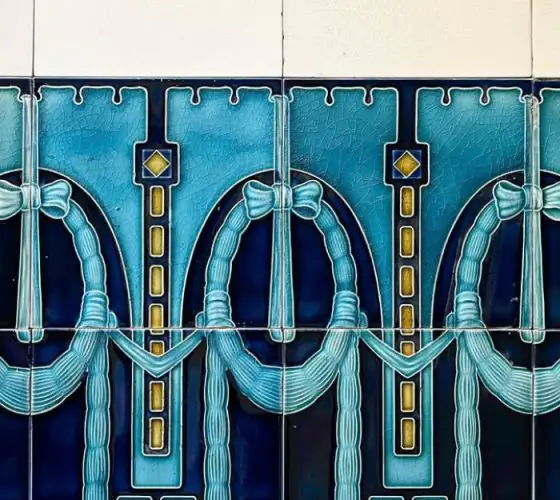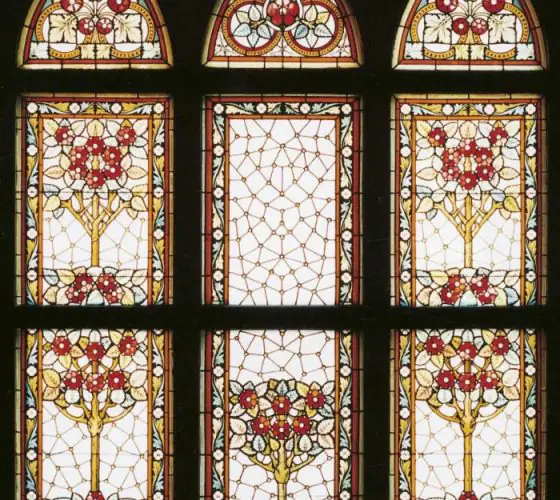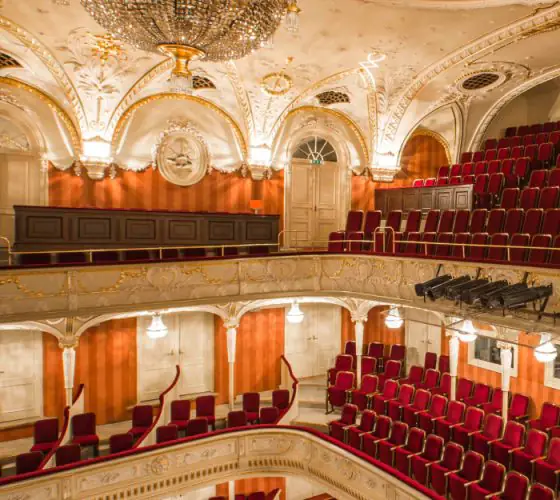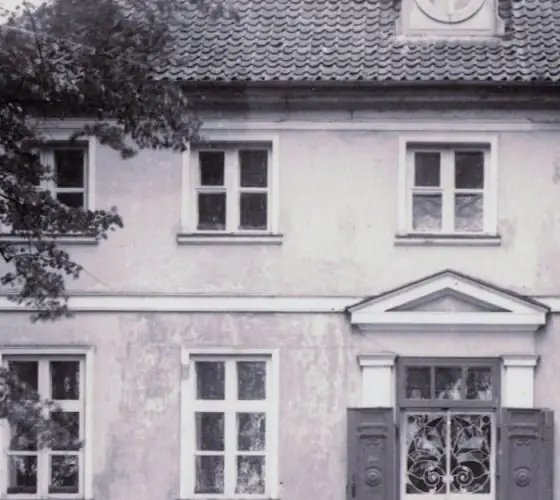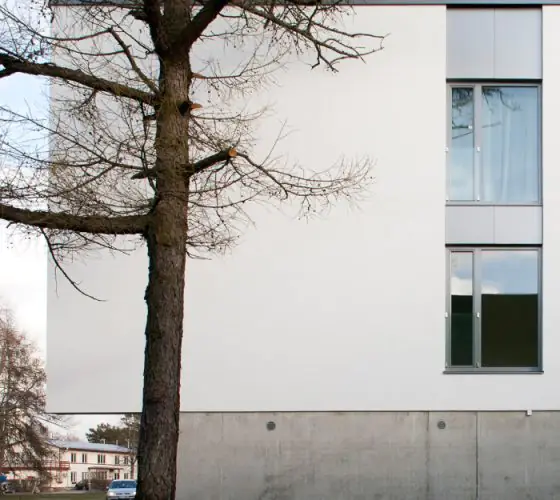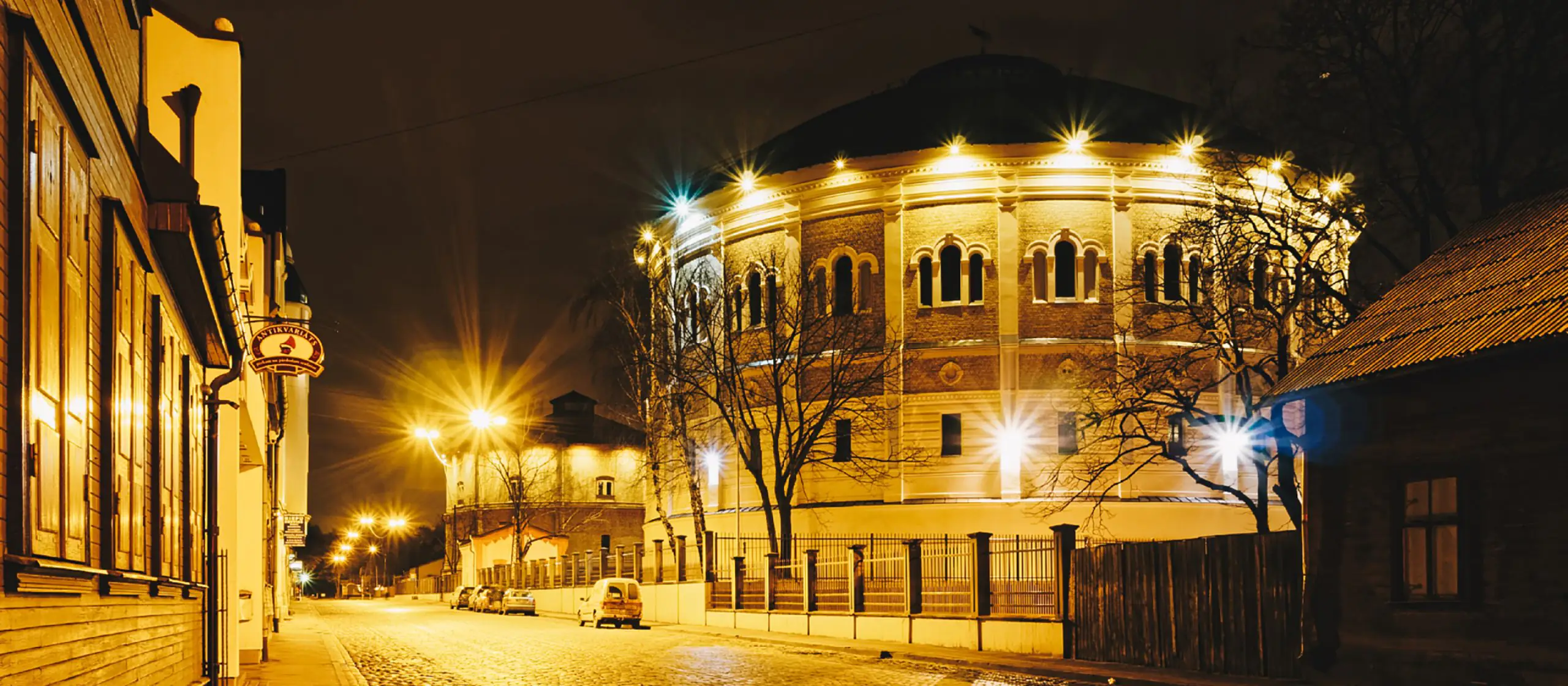
armazavod.ru
The history of gas holders on Matīsa iela is closely connected with the process of gasification of Riga in the 19th century: its first stage was the appearance of gas lanterns in the streets of the city. At that time, natural gas was not yet extracted on an industrial scale: it was produced in special gas plants by burning charcoal or coal in coke ovens.
The gas was then piped from the furnaces to gasholders: special storage tanks. An iron tank in the form of an inverted bell was immersed inside a water basin, gas was supplied inside the bell, thus raising it relative to the water level, and the water in the basin prevented the gas from escaping from under the bell.
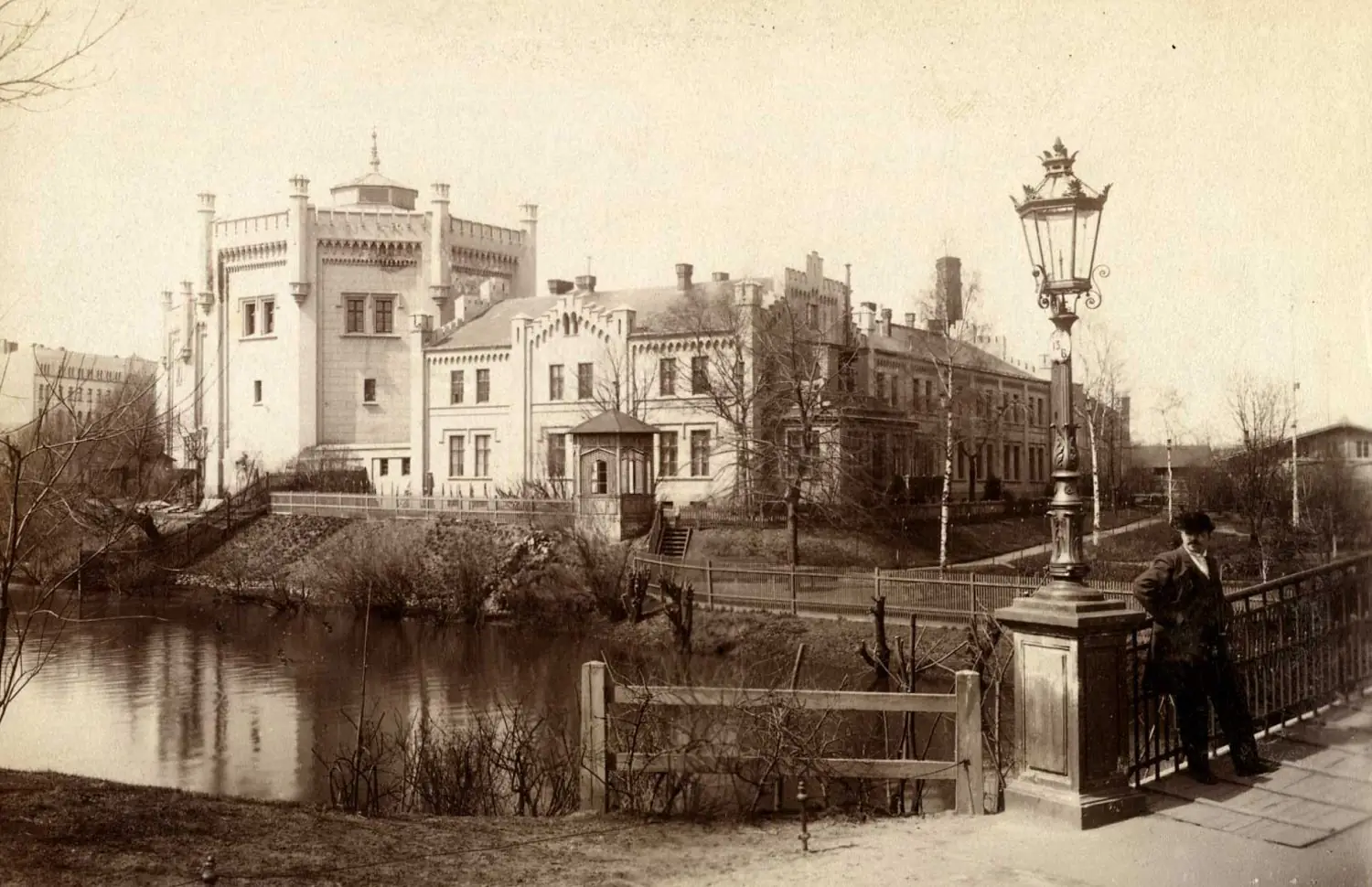
enciklopedija.lv
But if the engineering principle of gasholders in different parts of Europe was universal, the external appearance could differ significantly. In Latvia, due to severe climatic conditions, gas tanks needed an external frame to keep the water from freezing in winter. On the one hand, this made construction more expensive, but on the other hand, it opened up additional opportunities for the architect. Gasholders, along with water towers, became characteristic objects of European industrial cities of the 19th century, including Riga.
The First Gas Plant
In Riga, the decision to switch to gas lighting was made in 1844. However, it took more than ten years from that moment until the first gas factory (Rīgas pilsētas gāzes torņi) was built. The Riga authorities negotiated with French and German entrepreneurs about the construction of the factory, but the process was complicated by Riga’s difficult financial situation, and there was not enough space within the existing city limits to install such facilities.
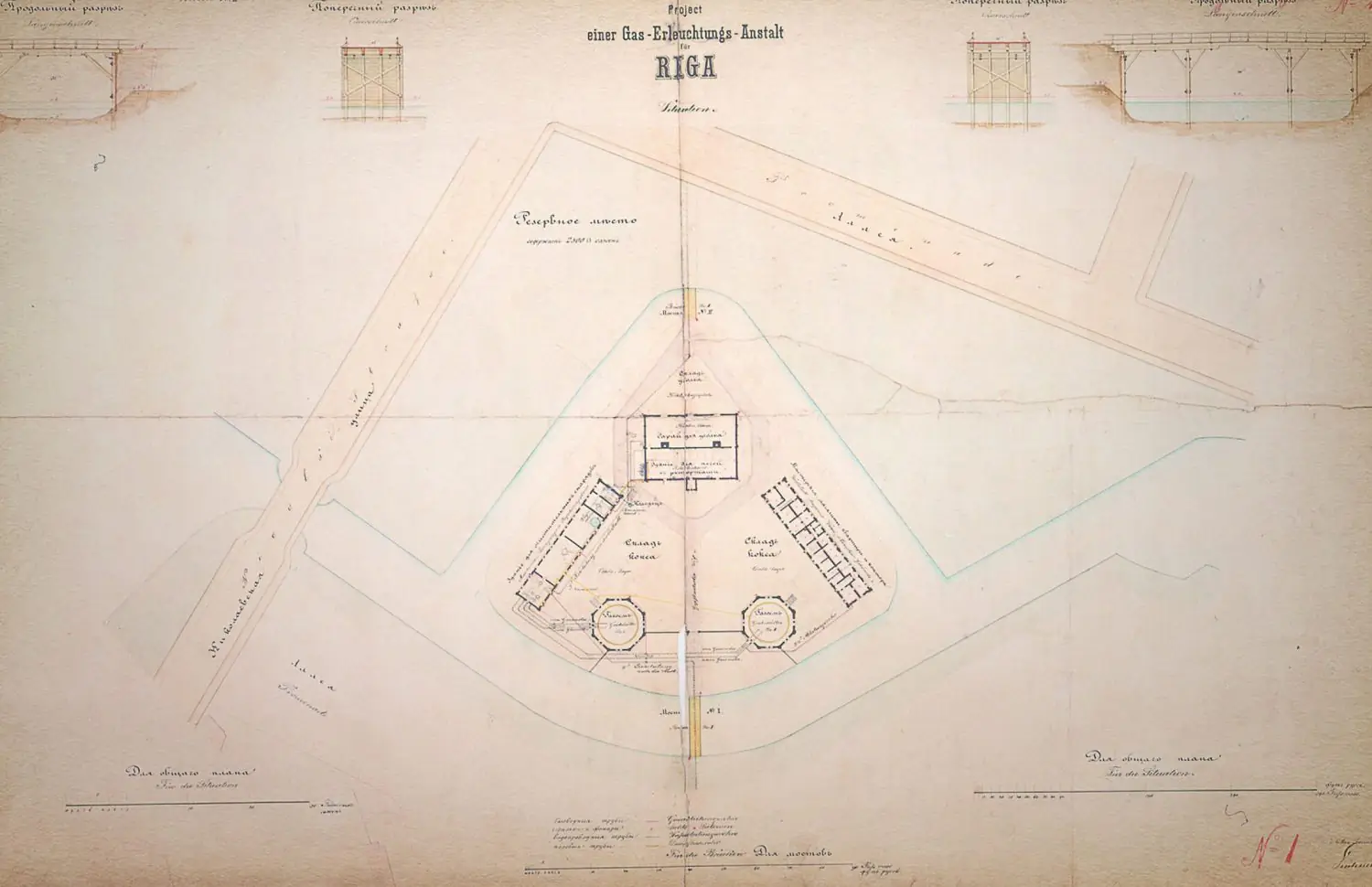
forum.myriga.info
It was only in 1857, after the demolition of the city fortifications, that a place was found for a gas factory (gāzes fabrika) on the site of the former fortification structure, the Jēkaba ravelīns. At that time the ravelin was still an island in the city canal. The gas complex was designed by Adolf Kinnel (Ādolfs Kīnels), a German engineer.
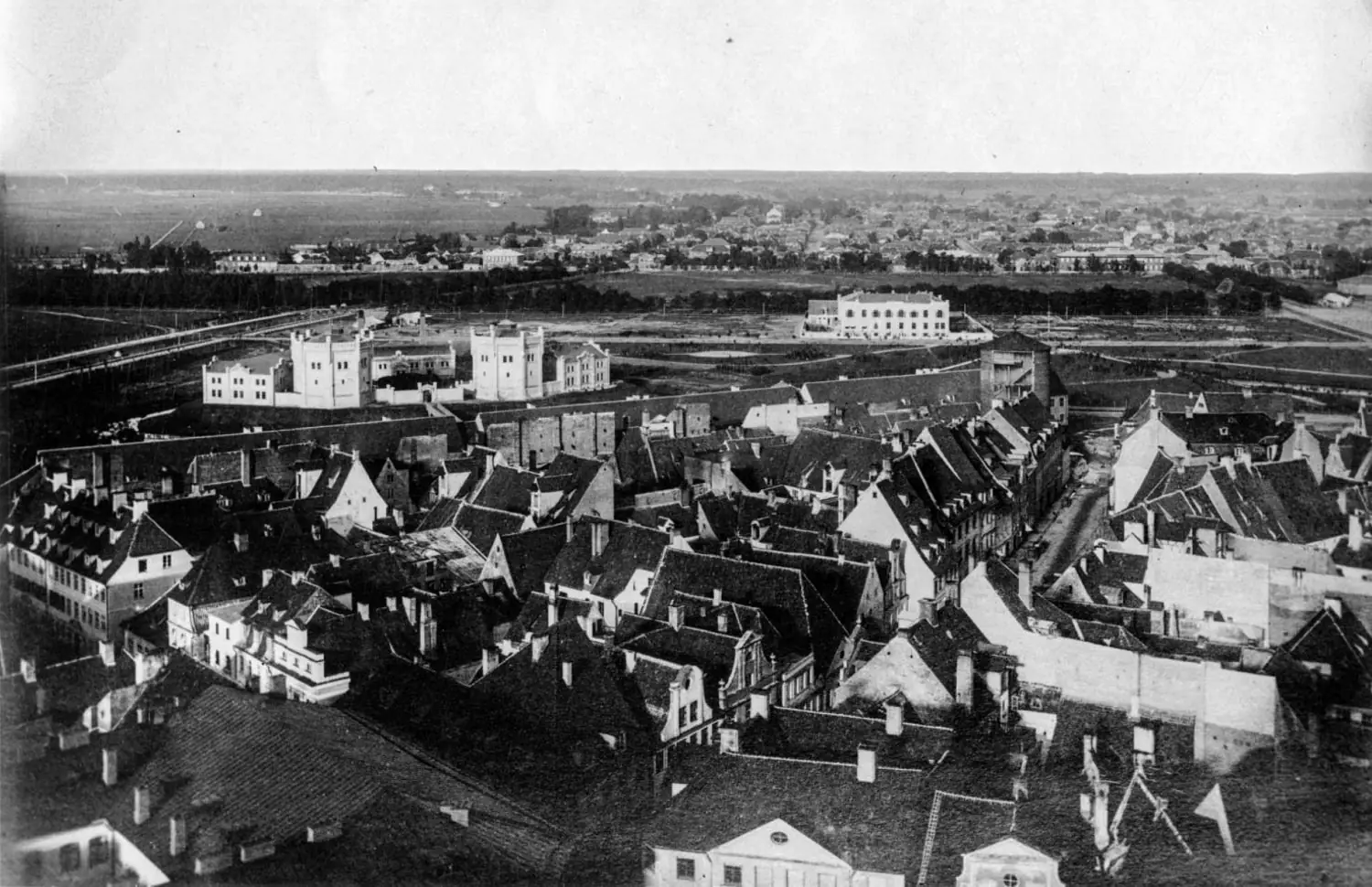
Source: Latvian State Archive of Film and Photo Documents
enciklopedija.lv
On July 12, 1861, the foundation stone of the first gas plant in Riga was ceremonially laid. The construction works were supervised by the Prussian civil engineer Paul Stephany and carried out by the master stonemason Johann Ferdinand Kastner.The facade of the factory was designed by the city architect Johann Daniel Felsko in the neo-Gothic style. The construction work cost the treasury 297 thousand rubles and was completed on August 6, 1862.
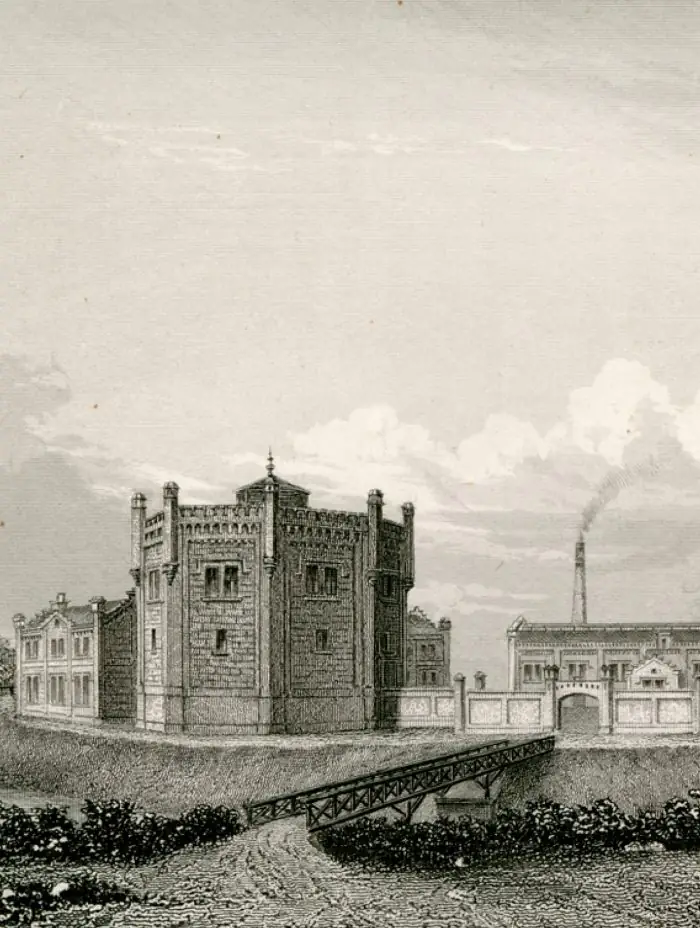
Drawing by J. Klark from a photograph by Robert Borhardt, printed by Augusts Vēgers in Leipzig, 1863
enciklopedija.lv
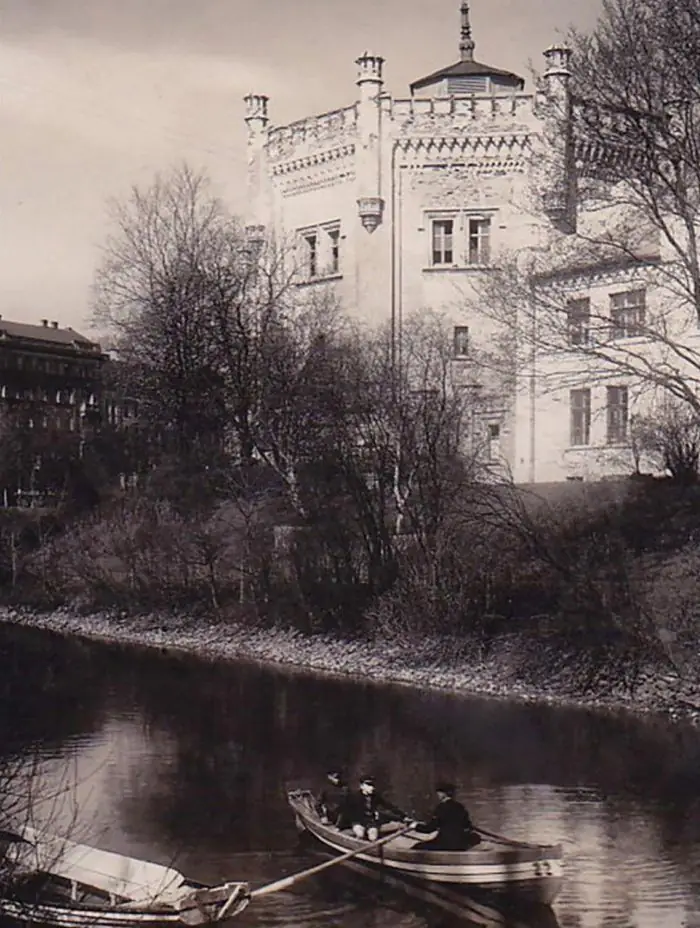
pastvu.com

instagram.com
In plan, the complex of buildings repeated the shape of the ravelin and included technical, service and residential buildings, a large building with coal storage and two gas holders for storing exhaust gas. The gas plant on the ravelin island was connected to the opposite shore by wooden bridges. In addition to the industrial complex itself, a cast-iron gas pipeline system appeared in Riga: initially, the pipe network was 28.5 km long and supplied gas to 678 city lights.
Riga’s first gas plant was one of the most expressive examples of neo-Gothic industrial architecture in the city. The complex resembled a real medieval castle with turrets, crenellated gables and walls. The gas holders created a parade image of the factory: octagonal buildings were crowned by belts of arches and cornices, and the windows were framed by archivolts: arcs that wrapped around the arched openings from the outside. A panorama of the spectacular complex located by the water was often depicted on city postcards.
The German-Baltic chemist Carl Schmidt described the new building in the year of the plant’s opening: “On the island of the former defense moat, connected to the mainland by an elegant bridge, stands an elegant castle with two imposing towers. <…> In terms of architectural solution, no gas facility in England can even remotely compare in beauty with the Riga facility, a real decoration of the city”.
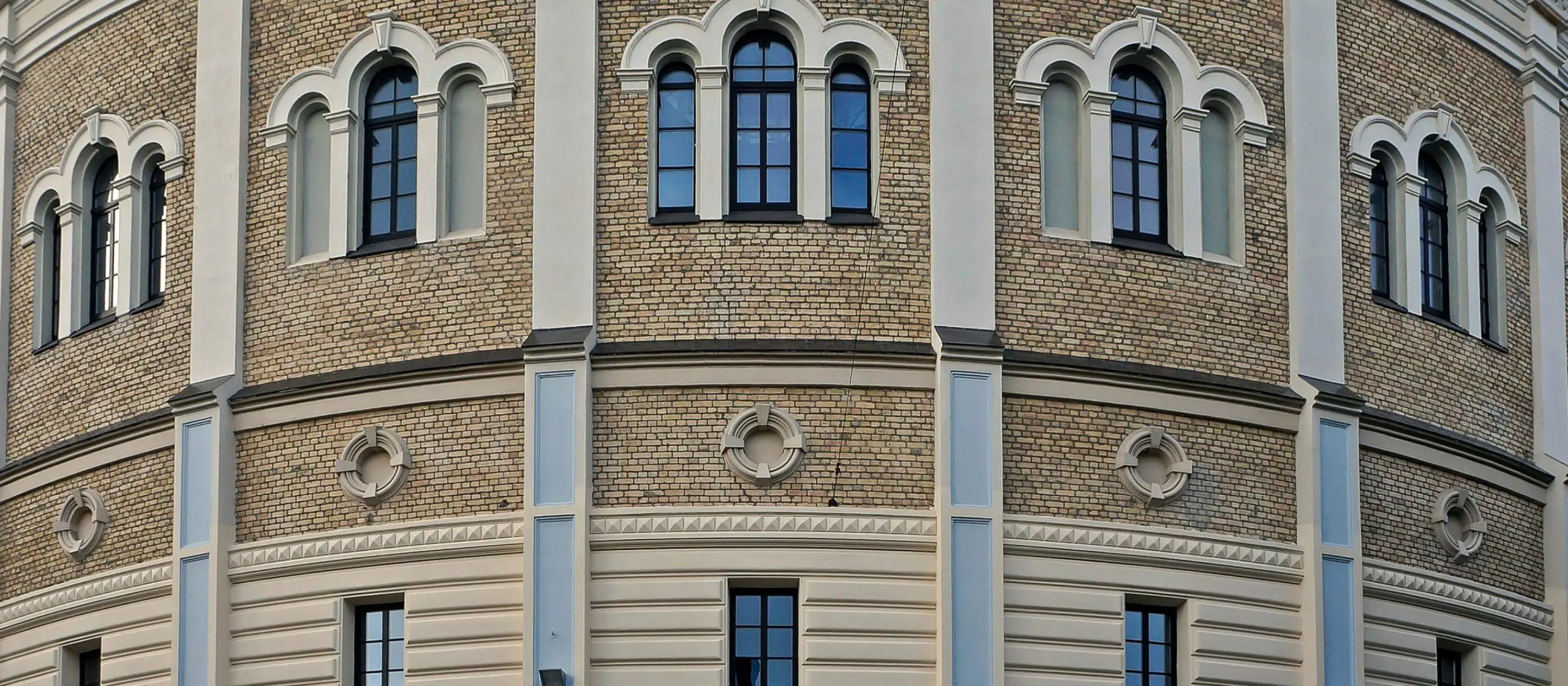
adobestock.com
The New Plant
In the second half of the 19th century, the demand for gas in the city continued to grow and the capacity of the plant became insufficient, but the location of the complex in the center of Riga significantly limited its further development. Therefore, a decision was made to build a new plant on the same street, but slightly further away from the city center.
In January 1875, the second gas plant began operations in the block between Matīsa iela, Vagonu iela and Bruņinieku iela. There was plenty of space, and over time the plant grew so large that it was able to supply gas to the whole of Riga. The complex included three gasholders built at different times.
The first gasholder in the new complex was built according to the design of engineer Emīls Kurgass in 1874, and the construction work was carried out by master stonemason Karl Anton Heyn.
In the 1880s, the plant began to expand and a second gasholder was built in 1882 to the design of local architect August Hartmann. This time the construction work was carried out by master stonemason Eduard Ulrich Lucas and carpenter Friedrich Wilhelm Hopfe.
In 1901, during the expansion of the complex, the third and largest gasholder was built to the design of architect Karls Felsko.
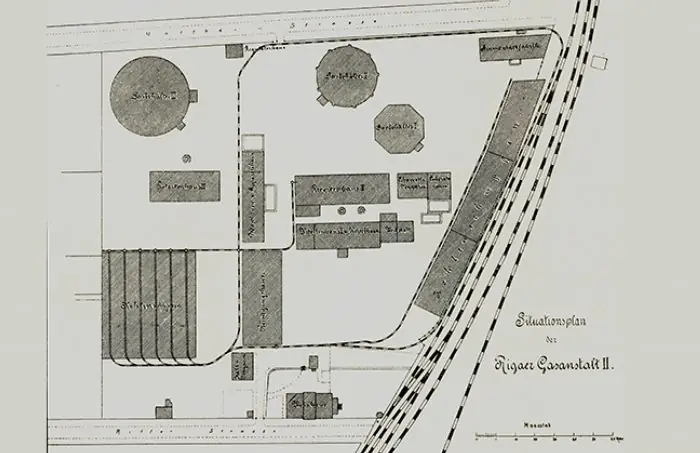
jugendstils.riga.lv
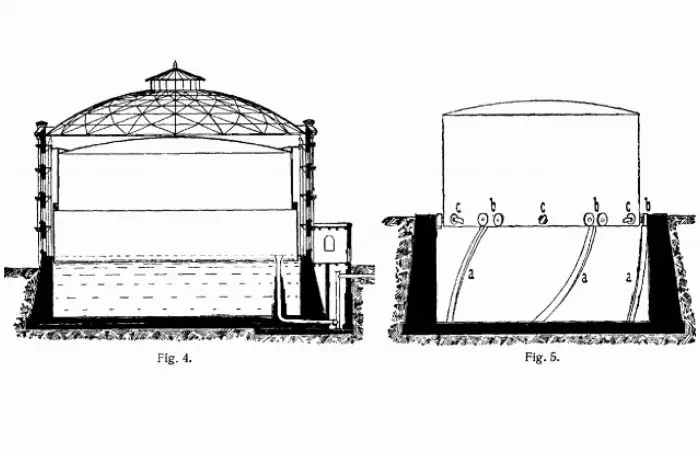
rigacv.lv
The architecture of the second factory complex differed from the first in its simplicity and rationality. The first two gasholders had unplastered brick facades with almost no decoration.
The last gas holder built was still architecturally distinctive: it was built in a neo-Renaissance style. The third gas holder was larger than the others, it had a cylindrical shape with a diameter of about 40 meters with a domed roof and three-part arched windows on the facade. Already in modern times, its appearance made it the hero of Agnese Aljēna’s illustrations in the children’s book “Above the Earth” (“Augstāk par zemi”, 2018), where the building is compared to a cake made of whipped cream.
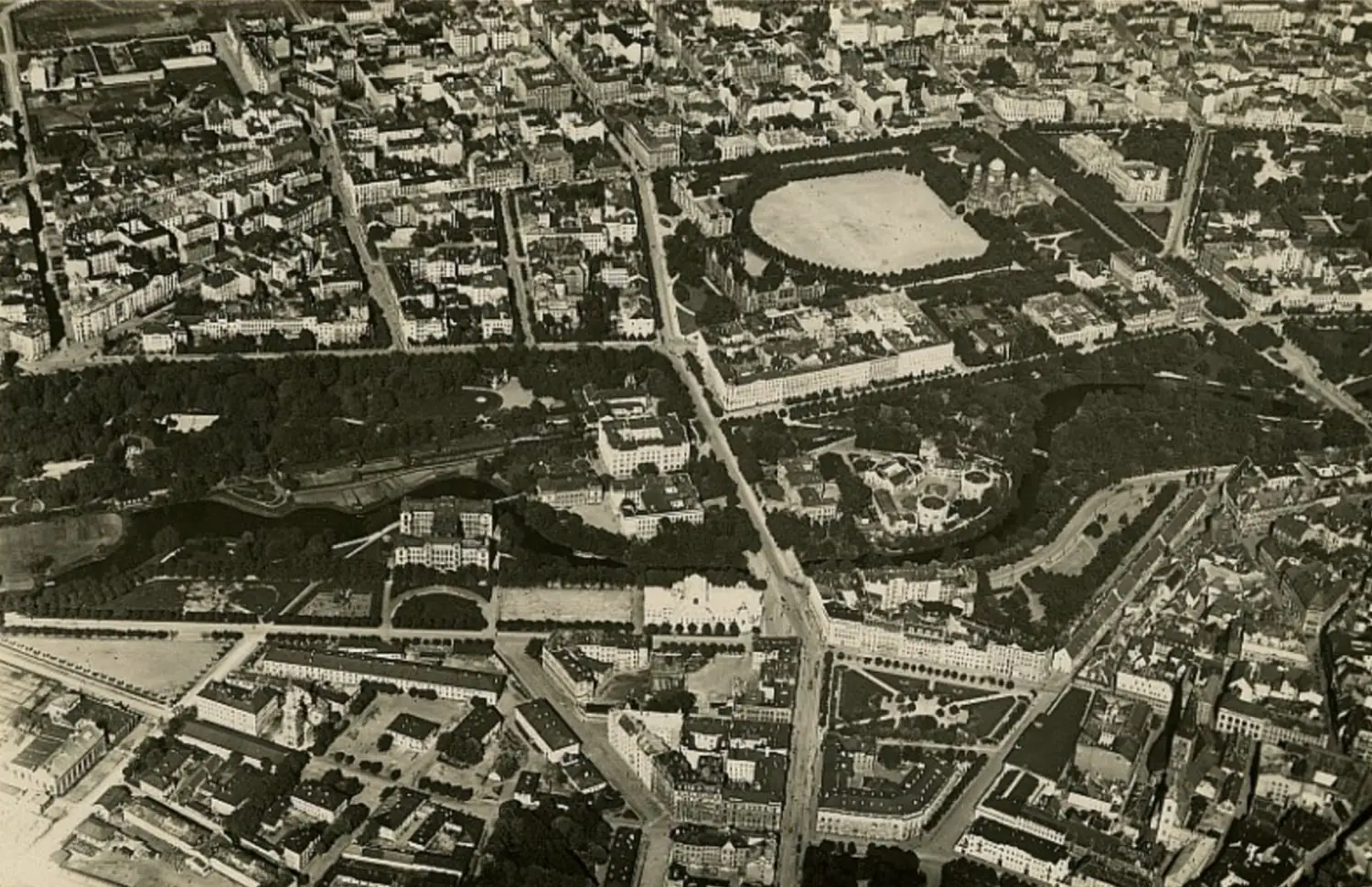
forum.myriga.info
The old (first) gas factory at Bastejkalns (Bastejkalns Hill) ceased operation in 1907. In 1933, the city authorities decided to demolish the factory buildings, which had no use for them.
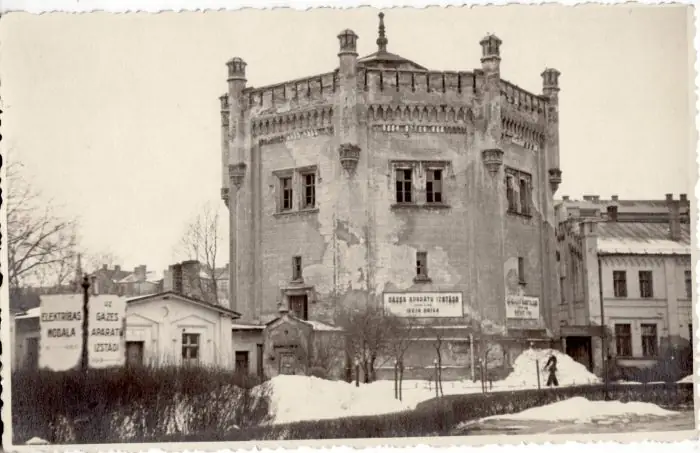
zudusilatvija.lv
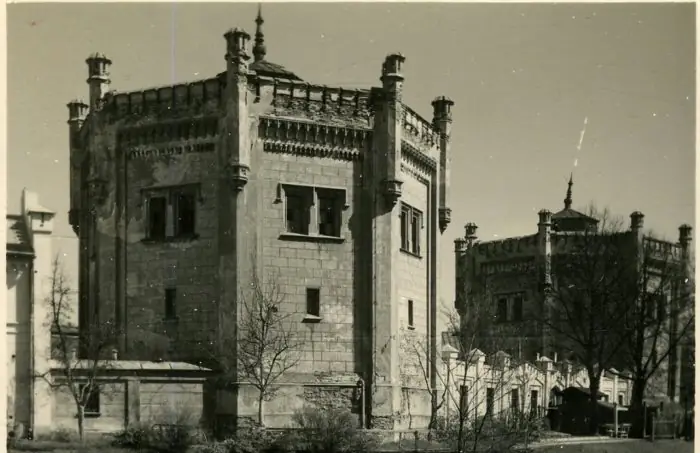
forum.myriga.info
The second gas plant on Matīsa iela grew, expanded and modernized. It operated during both world wars, except for a short pause during World War II. It continued to operate until the 1960s, but in 1962 it stopped: the world switched to natural gas, and gas production at the plant stopped.
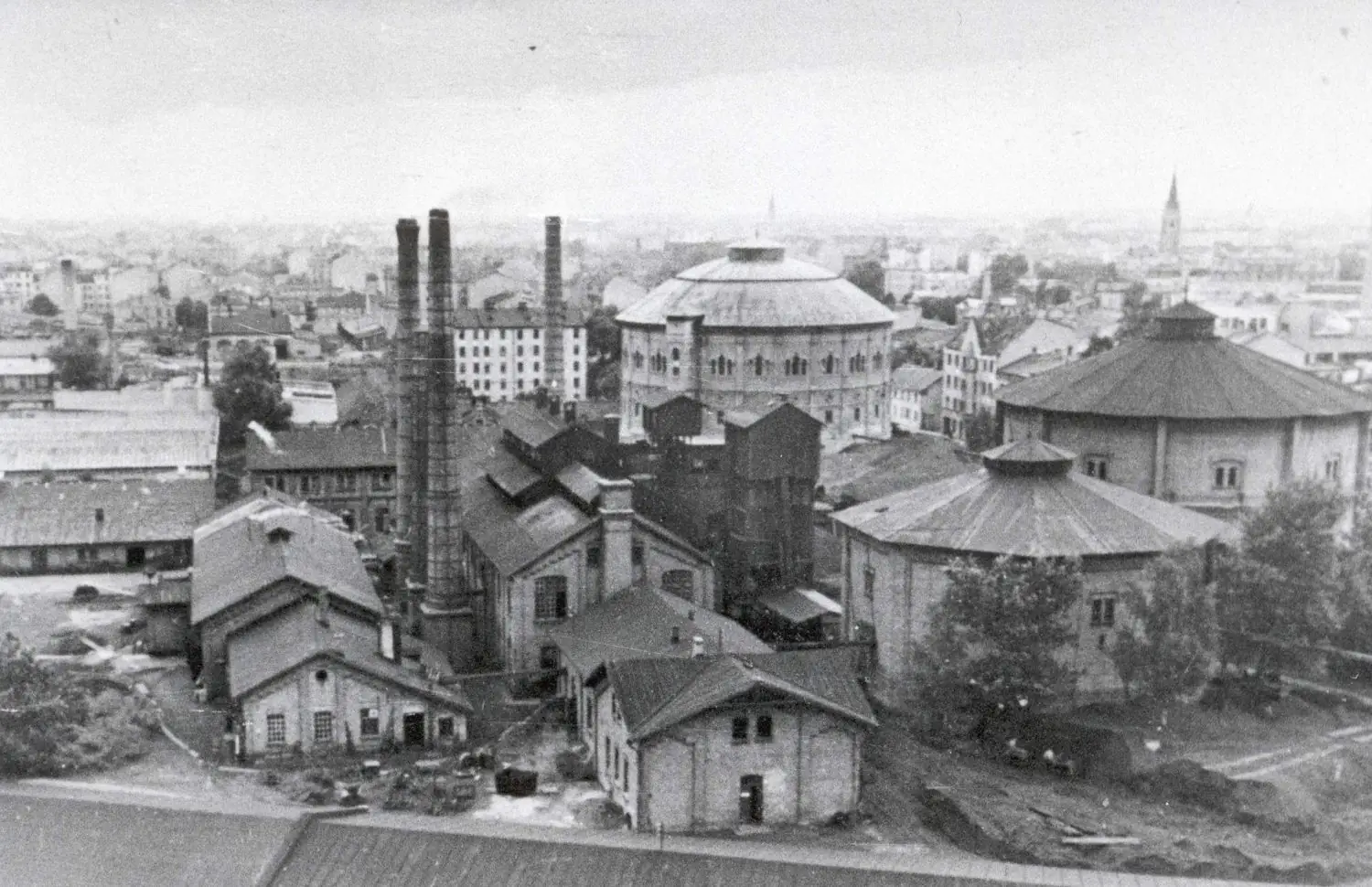
facebook.com
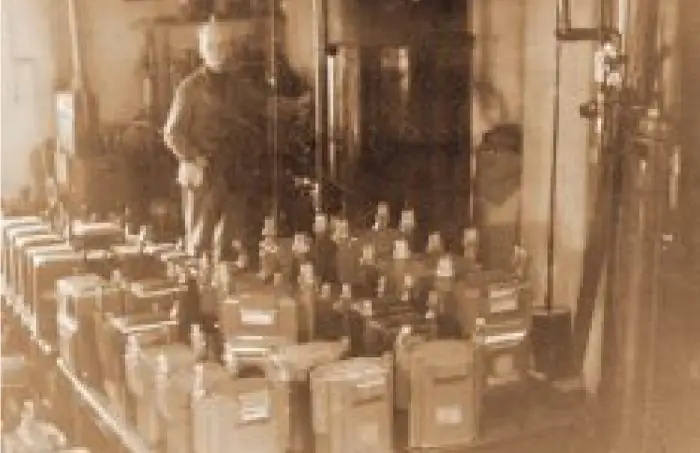
gaso.lv
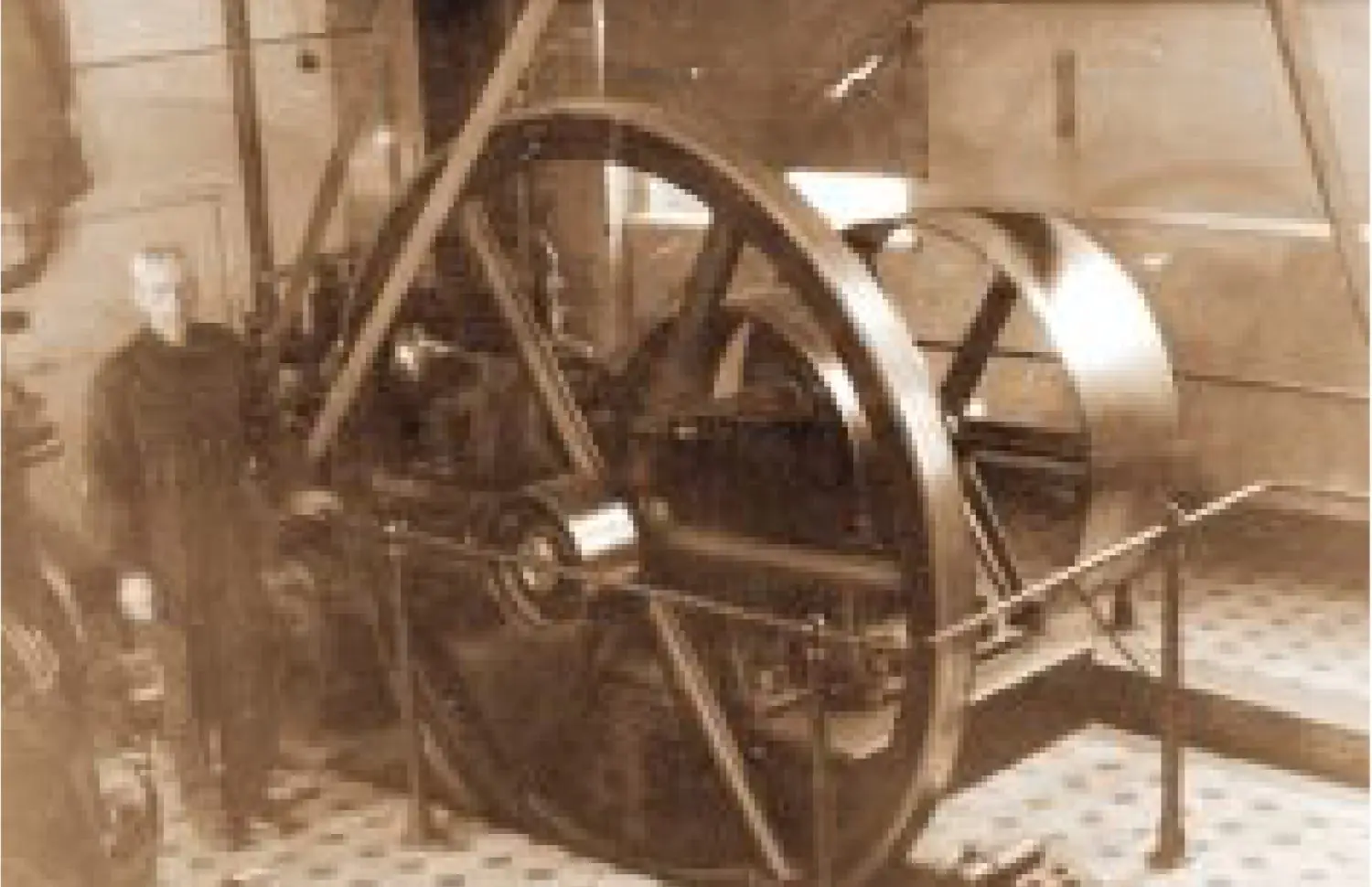
gaso.lv
Gasholders were not used for a long time: before the collapse of the USSR Latvia was connected to the main gas pipeline from Ukraine and there was no need for gas storage tanks.
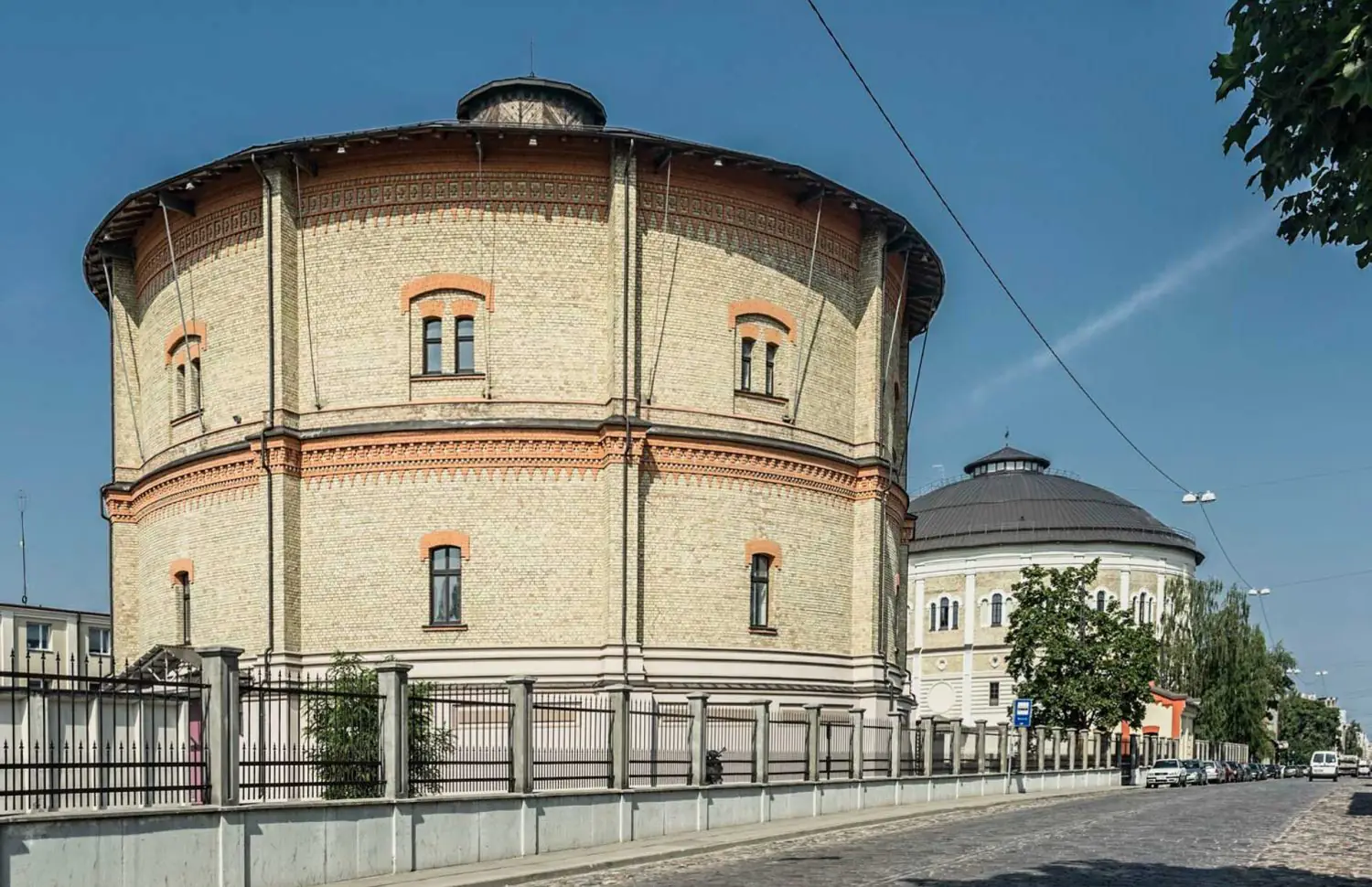
enciklopedija.lv
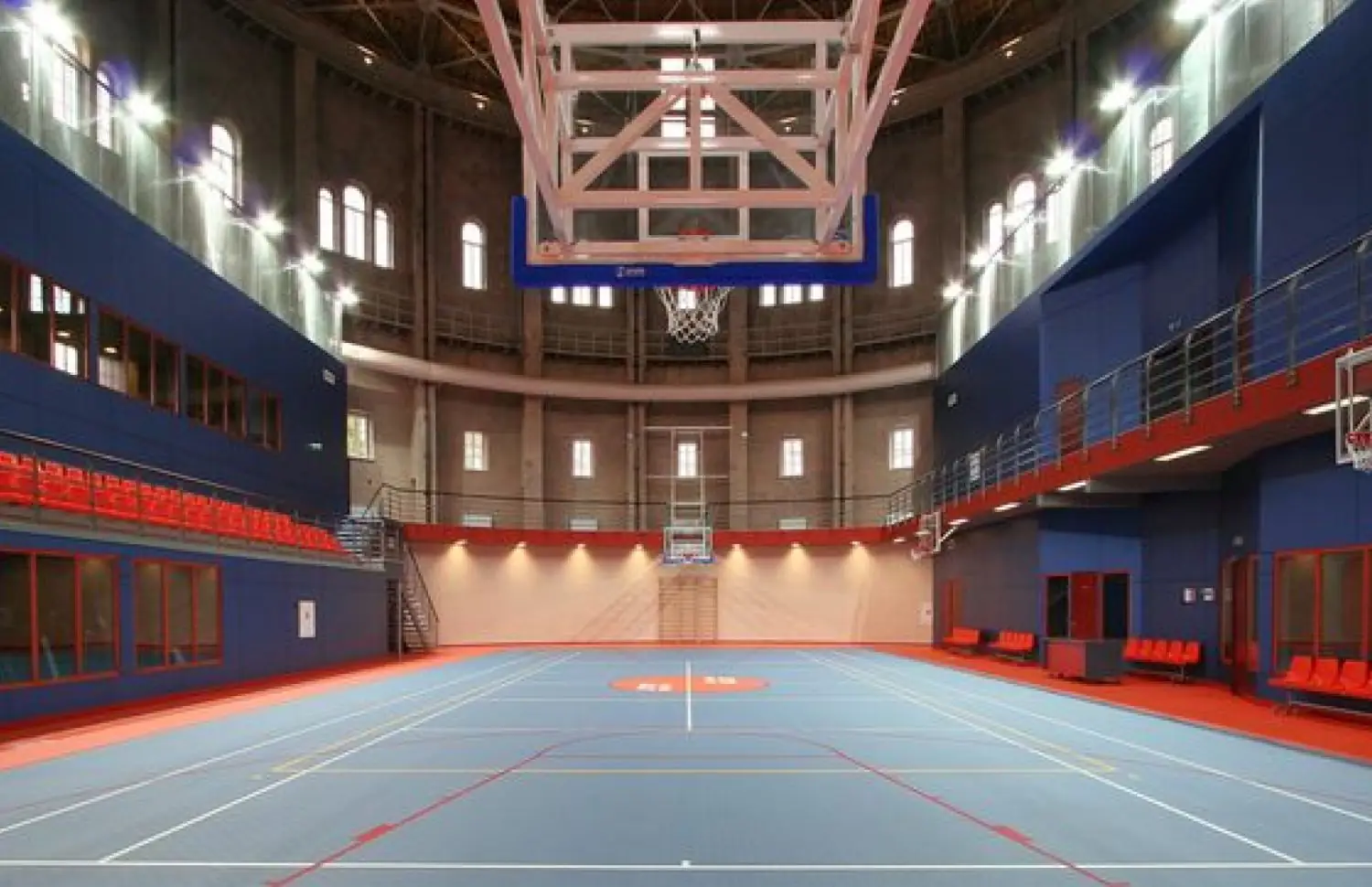
andi-proc.livejournal.com
In the late Soviet period, the plant ceased operations, and the gasholders were used as garages for storing and repairing cars. In the 1990s, restoration of the dilapidated complex began. The first gas holder, built in 1874, was demolished, while the 1882 and 1901 gasholders were preserved and restored. They both received the status of an architectural monument of local importance.
Today the towers belong to the joint-stock company Gaso gas company: they are parts of the administrative complex owned by the company. The 1882 gas holder still houses a machine shop, while the 1901 gas holder now houses a gymnasium.
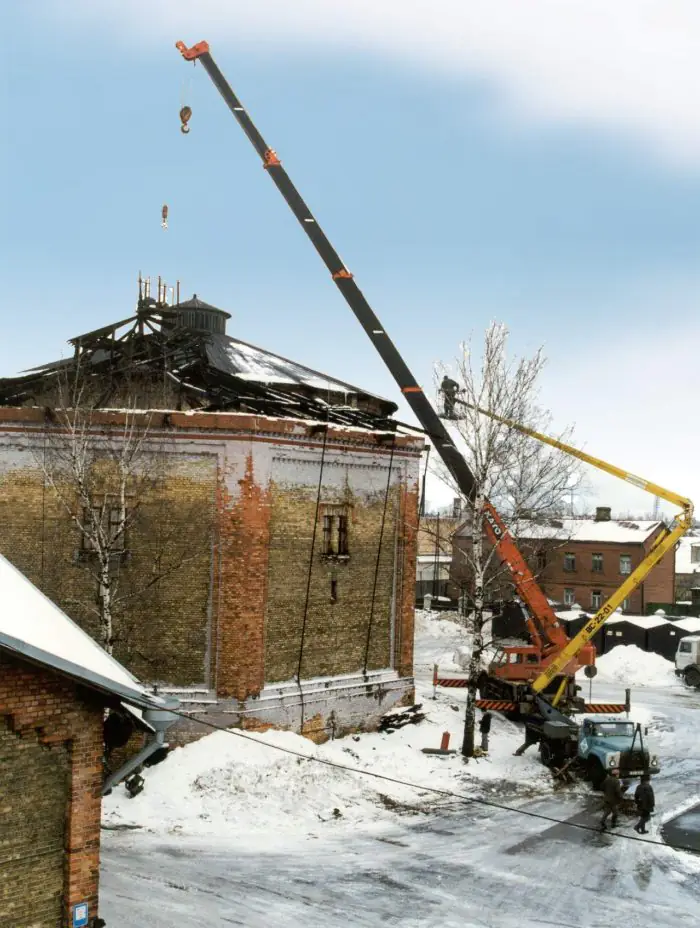
facebook.com
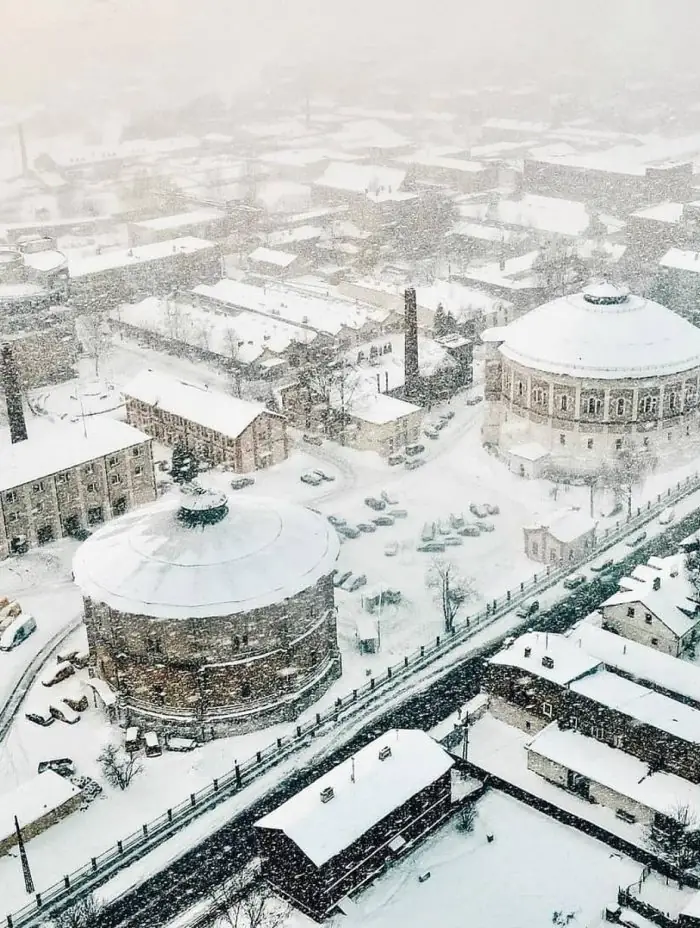
forum.myriga.info
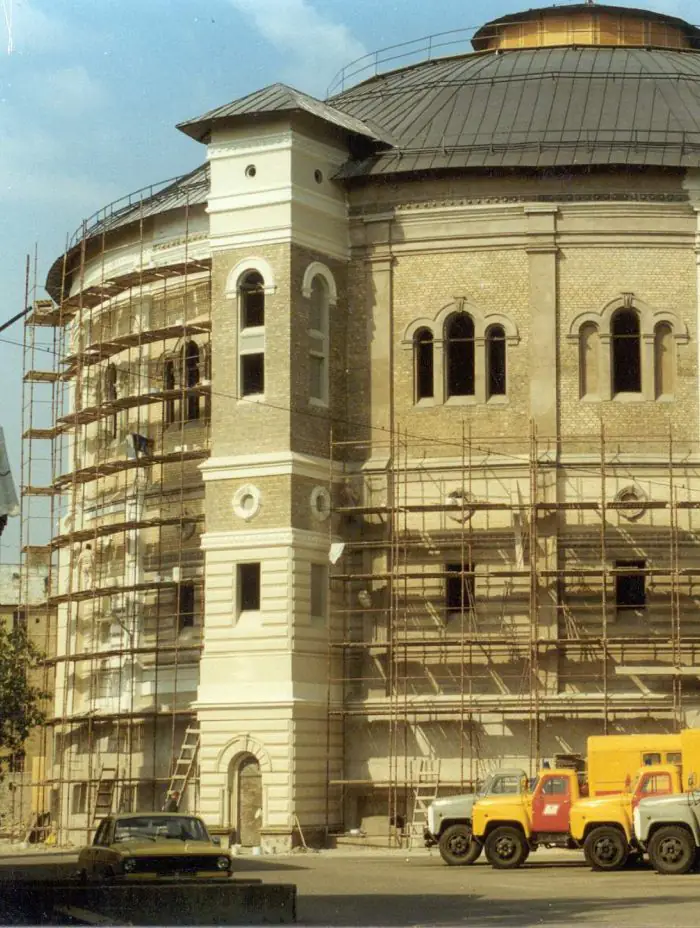
facebook.com


